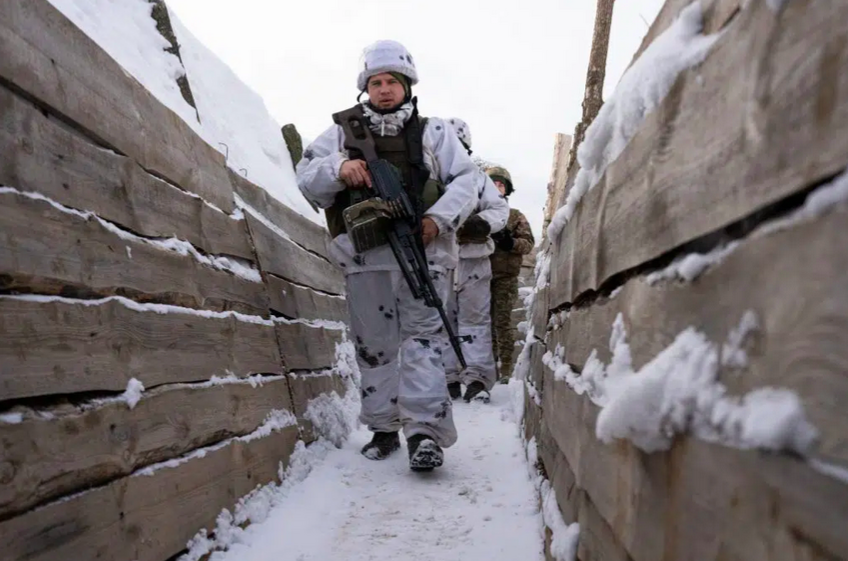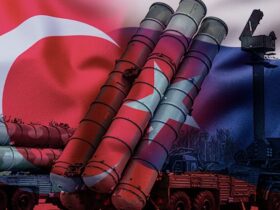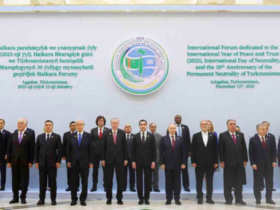The treaties of the old world that ensured the worldwide hegemony of the US are starting to disappear one by one. Russia announced the termination of the European Conventional Forces Treaty (CFE), following the Intermediate-Range Nuclear Forces Treaty (INF).
Russian Ministry of Foreign Affairs declared that Russia’s withdrawal process from the CFE has been completed. It was stated that other agreements related to this treaty have also lost their validity and Russia had suspended the treaty in 2007 due to the “destructive position of the US and its allies”:
“First, the attempts to ensure military security in Europe without considering Russia’s interests will not lead to anything good for the people who initiated them.
Second, clinging to outdated agreements that are not in sync with the new circumstances is a practice that is also doomed to failure and may lead to a collapse of the arms control cooperation mechanisms.
Third, the authorities of NATO member states and client countries have clearly shown their inability to reach and honor agreements. At this point, it is impossible to reach an arms control agreement with them.”
The statement also noted that two other legally binding agreements related to the CFE Treaty lost their validity: the Budapest Agreement of November 3, 1990, and the Flank Document of May 31, 1996, regarding the maximum levels for holdings of conventional armaments and equipment for six member states of the Warsaw Treaty.
The US also suspended
After Russia, the US also announced the suspension of its obligations in the Treaty. The US Department of State stated that it took this decision in response to Russia’s withdrawal. In the statement, it was claimed that Russia’s withdrawal from the Treaty “signals a further effort by Moscow to undermine decades of progress made towards building transparency and cooperative approaches to security in Europe”, and so the US “concluded that we should not continue to be bound by a treaty to which Russia is not bound.”
NATO also expressed support for the US decision.
Türkiye “regrets”
The Turkish Ministry of Foreign Affairs expressed its “regret” on the Russian Federation’s decision of withdrawal from the Treaty.
“Unfortunately,” the statement continued, “as Russia’s decision to withdraw from the CFE Treaty is coming into force on 7 November 2023, meaningful implementation of the Treaty by other States Parties has become impossible in practice.”
The statement includes Türkiye’s decision that “under such conditions, we, together with other NATO Allies that are States Parties, needed to suspend the implementation of the Treaty for as long as necessary.” Yet, noted, “this decision is, in essence, reversible”:
“This decision is, in essence, reversible. The need for the foundations and fundamental principles of the legally binding CFE Treaty that provide balance, transparency, and predictability among military forces with its numerical limitations and sub-regional system, including the flank regime, continues. Modernization, as may be needed for the European security architecture in the upcoming period, can only be built on this basis. In this respect, we will continue exchanges on this matter with all relevant parties.
The current extraordinary period increases the importance for a return to the full implementation of arms control, disarmament, and non-proliferation arrangements for international security.”
What is the CFE?
The Conventional Armed Forces in Europe (CFE) Treaty was initially signed between NATO and the Warsaw Pact in 1990 and came into effect in July 1992. The treaty aimed at numerical reductions, mutual information sharing and binding restrictions on countries party to the agreement in five categories of conventional weapons, including tanks, artillery, armored combat vehicles, combat aircraft, and attack helicopters. Article 2 of the treaty specified the categories of weapons to be restricted, while sections 3, 4, and 5 revealed the limitations numerically. The total numerical limitations imposed by the CFE Treaty for both parties were 40,000 combat tanks, 60,000 armored combat vehicles, 40,000 artillery pieces, 13,600 combat aircraft, and 4,000 attack helicopters. Naval forces were excluded from the scope of the Treaty.
The CFE Treaty not only on numerical limitations but also identified four regions where the Treaty to be implemented, aiming to prevent the concentration of forces in specific areas. The dissolution of the Soviet Union in 1991, NATO’s continued expansion, and the rapid militarization of Europe de facto rendered the treaty obsolete. Although the Treaty’s limitations were updated in 1999, they could not be adapted to the contemporary conditions. NATO countries did not approve the renewed CFE Treaty and that led Russia to announce the suspension of the Treaty in 2007. In March 2015, Russian President Vladimir Putin, who had already halted Russia’s participation in the CFE Treaty, initiated the process of terminating the treaty on May 29, 2023.
Retired Brigadier General Prof. Dr. Fahri Erenel, and Uwidata author historian and political scientist Mehmet Perinçek.
“Russia is severing its ties”
– Retired Brigadier General Prof. Dr. Fahri Erenel –
“Another important pillar of the security architecture formed during the Cold War based on treaties has now disappeared. This actually means global powers freeing themselves from shackles that limit them. This began during the Trump era. The cancellation of the INF Treaty by both parties, then the discussions of terminating the START Treaty… And Russia declared its withdrawal from the agreement preventing the ban on nuclear weapon tests. so, major states are withdrawing from these agreements to use their initiatives more freely due to the international space evolving through a more realistic and anarchic environment. Trump withdrew even from the Paris Climate Agreement.
In the past, international agreements used to be long-lasting, but now very short-lived. So they lost all their significance. Being expelled from the Council of Europe is actually an opportunity for Russia. Russia is severing its ties with the old shackles to implement its international doctrine.
The European Conventional Forces Treaty (CFE) and the Intermediate-Range Nuclear Forces Treaty (INF) aimed to prevent a return to balance of terror based on nuclear weapons after the Cold War. However, looking back, we see that each country has violated these treaties in a way that suited them. Lastly, although Israel was not supposed to have nuclear weapons, it turned out that they did. So, Putin asks, ‘why should I be part of these systems?’ Russia thinks that the security architecture of the 1990s is no longer sustainable and Russia cannot implement its own international policy, confining itself within the scope of these agreements. The US initiated the withdrawal from these treaties, and Putin responded with a countermove.”
“The Eurasian Front will not tolerate American aggression”
– Uwidata author historian and political scientist Mehmet Perinçek –
“Russia’s withdrawal from the Treaty is nothing but stating the obvious. Russia and the Atlantic Front are already in a war over Ukraine and Eastern Europe. The US, NATO and the Atlantic Front did not keep their promises not to expand NATO eastward after the dissolution of the Soviet Union and the Warsaw Pact. NATO expanded eastward in 5 phases. This had de facto terminated the agreements. We can mention the military aid to Ukraine in this context too. Russia, in turn, initiated special military operations to break NATO’s encirclement policy. The termination of the Treaty should be seen as a continuation of the line followed after this operation.”
“The unipolar world order that began in the 90s, as well as the treaties of this process, has come to an end. The initiative has shifted to the Eurasian Front. By terminating this Treaty, Russia is reveals that the Eurasian Front will not tolerate American aggression and will keep a determined stance.”
“The US is the violator of the Treaty”
Retired Rear Admiral Cem Gürdeniz made an assessment on the subject in social media. Gürdeniz criticized the statement of Turkish Ministry of Foreign Affairs:
“It’s not easy to understand our Ministry of Foreign Affairs. The US, the violator of the CFE Treaty, has been extremely amassing military forces in Greece. France signed agreements, including the deployment of forces, in the Greek Cypriot Administration of Southern Cyprus. The UK, after Gaza, conducted an unprecedented level of buildup supported by Israel in the Sovereign Bases of Southern Cyprus. It continues to increase. Thanks to Türkiye, NATO expansion (Sweden-Finland) has been achieved in an unprecedented scale in history.
US bases in Iraq and Syria continue supporting the YPG/PYD, the US shot down Turkish UAVs, most of our NATO allies support Israel despite the massacre in Gaza. In these circumstances, is our only concern Russia’s withdrawal from the CFE Treaty? I really don’t know what to say. There is an agreement in place, and our so-called allies are effectively nullifying it. What are we waiting for to see that the US and NATO’s aggression will also target Türkiye, and even already is?”
Cover graphic: Ukrainian servicemen seen along the frontline outside Svitlodarsk, Ukraine on January 30. (Photo by Stringer/Anadolu Agency via Getty Images)

















Leave a Reply